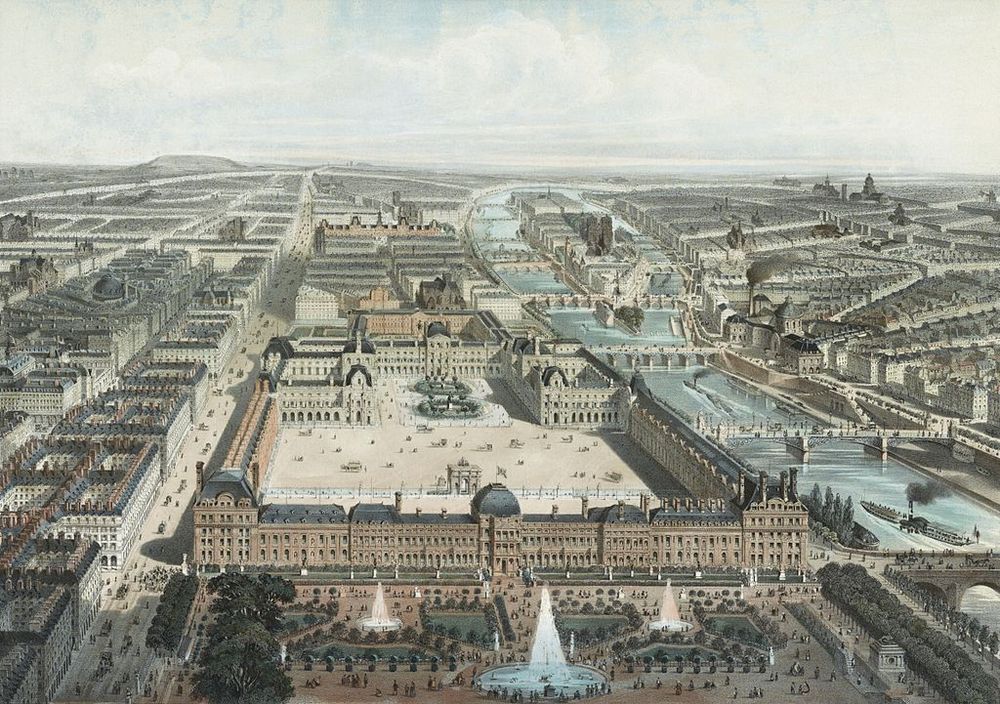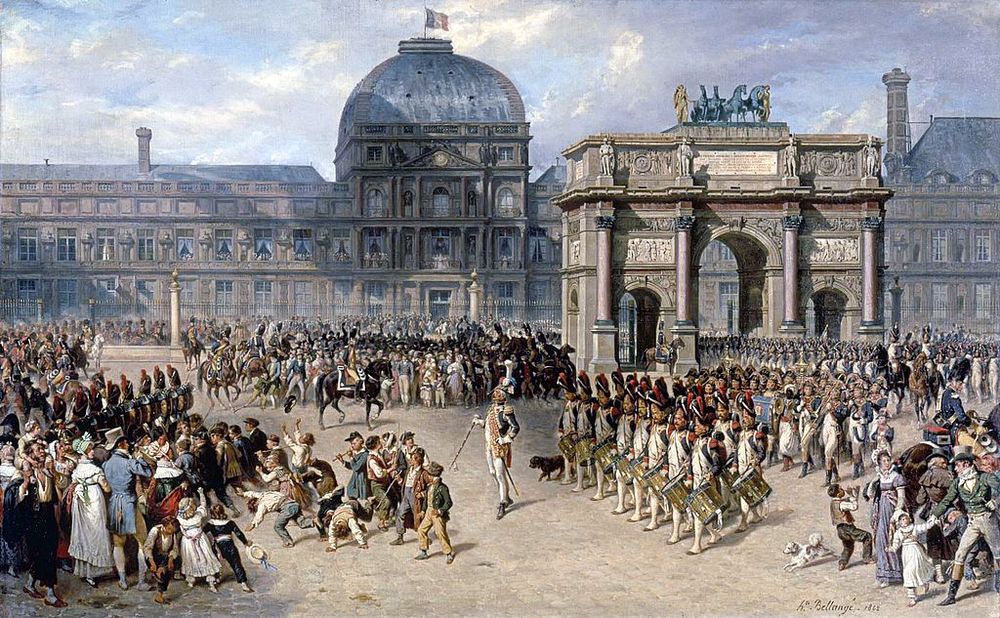The Tuileries Palace was commissioned in 1564 by Catherine de' Medici, widow of Henry II of France.
Catherine engaged Philibert de l’Orme to design the palace.
But de l’Ormes untimely death in 1570 led to Jean Bullant taking his place.
The outbreak of the civil between Protestants and Catholics in Paris in 1588 abruptly halted the work.
He constructed the Grande Galerie, parallel to the Seine, which connected the two palaces.
After the death of Henry IV of France in 1610, work on the palace halted again.
Le Vau made other significant changes.
At the same time, Louis' gardener, Andre Le Notre, redesigned the Tuileries Garden.
The Tuileries, the Louvre and the Rue de Rivoli, view from the Tuileries Gardens.
Military review in front of Napoleon’s new triumphal arch in the courtyard (1810).
The Tuileries experienced the most lavish days under Napoleon III.
Empress Eugenie held gala dinners, balls and receptions for the crowned heads of Europe.
The wedding of Napoleon III at the Tuileries Palace.
An evening with the Duke of Orleans at the Pavilion de Marsan, Tuileries Palace.
The ambassadors' gallery at the Tuileries Palace.
The palace burned for two days and thorougly gutted the place except for the southernmost part.
The dome itself was blown up by explosives placed in the central pavilion and detonated by the converging fires.
I wish that the same may befall all the public buildings of Paris.
The burning of Tuileries Palace on 23 May 1871.
The ruins of the Tuileries stood for 11 years, after which it was demolished.
It still closely follows the design laid out by the royal landscape architect Andre Le Notre in 1664.






